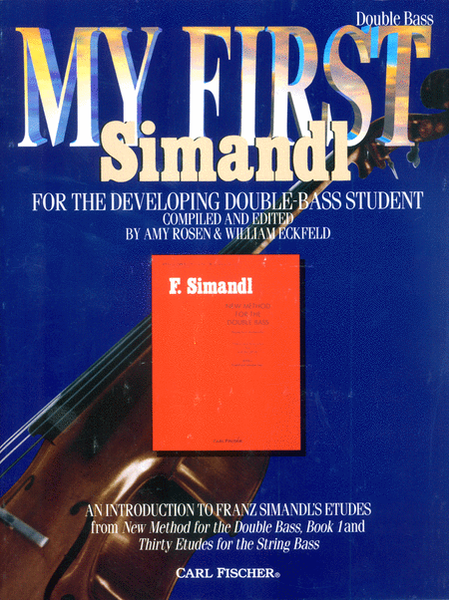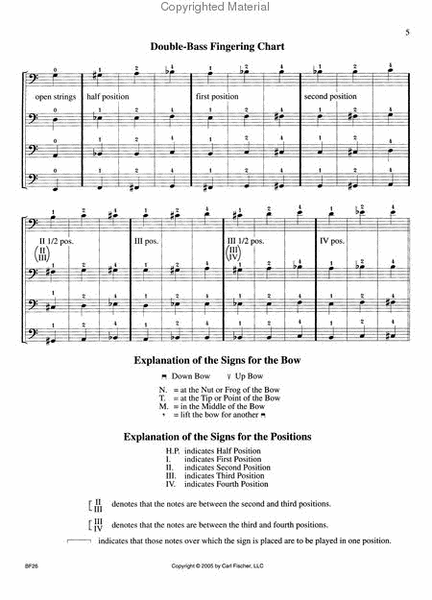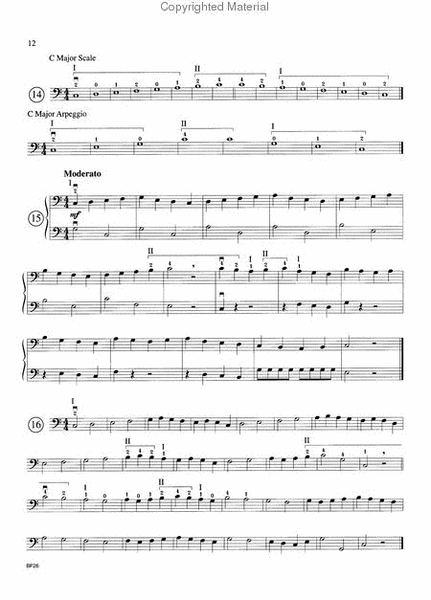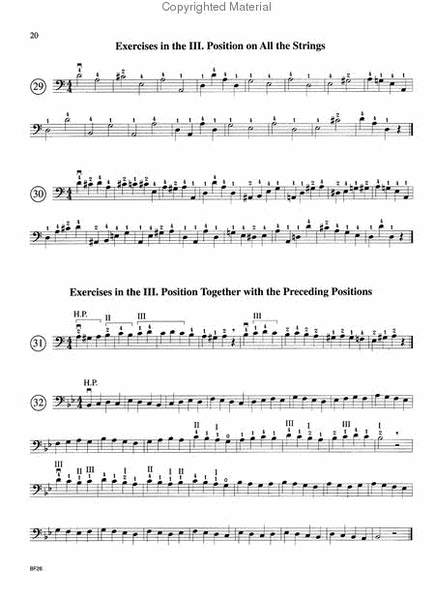My First Simandl
An Introduction to Franz Simandl's Etudes
-
Ships in 1 to 2 weeks
Details
Description
SKU: CF.BF26
An Introduction to Franz Simandl's Etudes. Composed by Franz Simandl, Frederic Chopin, Hugo Schlemueller, and John Merle. Edited by Amy Rosen, Lucas Drew, and William Eckfeld. Arranged by S. Price Frederick Zimmermann. SWS. Back To School. Classical. Student book. With Standard notation. 40 pages. Carl Fischer Music #BF26. Published by Carl Fischer Music (CF.BF26).ISBN 9780825859748. UPC: 798408059743. 9 X 12 inches. Text: Frnz Simandl.
An introduction to the essential elements of the famousSimandl etudes presented in a logical manner and in aformat for developing students to use. This book willimprove the technical facility and musicianship of theyounger bassist the way the Simandl etudes have forover a century. It will serve as a fantastic preparation forthese ever-popular studies, and it will ready studentswanting more specialized instruction from these treatises.My First Simandl is designed to work both in an individualand group setting and is an invaluable tool to takethe young bassist to the next level of playing.Considered by most as the definitive instructional methodfor the double bass. It contains over 140 pages of exercises,and etudes covering the first, second and thirdpositions to develop technique and musicianship. Thisbook has served as the method of choice for generationsof musicians in their study of the double bass. It is themost widely accepted method and is used the world over.
In preparing My First Simandl for double bass, great care has been taken to preserve theoriginal intent, musical and educational objectives that Franz Simandl set forth in hisetude books. Consequently, many of the exercises are exactly as they are in the originalbooks. However, there are many areas where the studies started at a level of difficulty,which made it unrealistic for use by young players. Therefore, some studies have beenshortened in length or have had note values doubled.The studies have been arranged in an order taking into account tonality, grade of difficultyand style. The studies chosen were considered to be the most important ones forthe student at this particular stage of technical development. In addition, an effort wasmade to provide a consistent system of fingerings and bowings.All of the studies should be practiced slowly in the beginning, regardless of the tempomarking. Those with multiple bowings should practice the bowings on open strings firstuntil the bow arm has become used to the movements. Some simple slurs are includedin the etudes. Those exercises which include suggestions for extra bowings are to beused at the teacher’s discretion.Many of the exercises are duets for the student and teacher. They will enhance the student’sear training in the specific tonality and make the playing of these works more excitingfor the student. The teacher will also provide a model for the student in intonation anddynamic contrast. The top line of the duet should be the student’s part and is markedaccordingly with the appropriate bowings and fingerings. The bottom line has only basicbowings and fingerings, since it is expected to be played by the teacher. As the pupilprogresses, s/he may be able to handle both lines of many of the duets.The first part of the book is organized around an individual scale and arpeggio. This is anattempt to help the student become solid in the specific tonality. At each scale section,the teacher might chose to teach any other scales with the same “finger pattern” as theone introduced.The second part of the book—Technique Section—introduces new aspects of techniqueon which every young string player must work. Although this part is presented at the endof the book, the teacher might want to incorporate some of these exercises in betweenthe scale sections to reinforce other musical material being studied at the same time.Some pieces are included at the end of the book which utilize the techniques taughtthroughout this volume.




 Share
Share